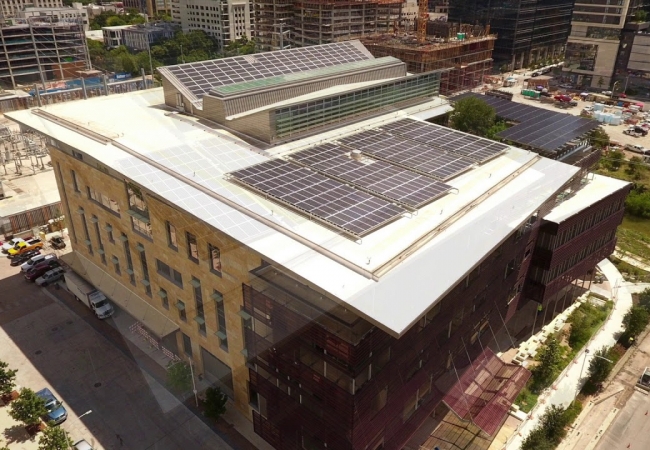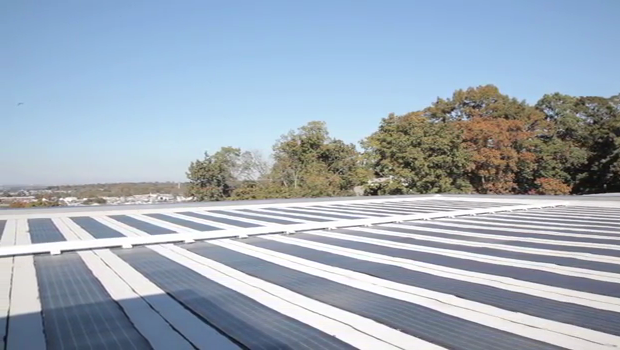Libraries that Have Made the Leap to Solar Power
Discover how much you can save today with our solar calculator
Lighting the Way: Libraries That Have Made the Leap to Solar Power
Public libraries have long been forces for good in their communities, bringing together an array of resources to support vital education and outreach efforts. Now, there’s a movement afoot to use the public library platform in another way. The Green Libraries Movement is an effort to make libraries a powerful agent for good in the fight against climate change, providing local communities with educational tools and serving as a shining example by embracing solar energy and other green technologies. We’re here to celebrate the libraries that have made the leap to solar power and to take a look at how they’re creating positive change for themselves and for their communities.
Educating by Example
The need to protect the environment and create more sustainable, responsible solutions for the future has never been more evident than it is today. Creating a greener future requires bold leadership and innovation, and with their ability to connect and engage with their local communities, libraries are uniquely suited to play a leading role in those efforts. In fact, whether it’s heading the charge in improved recycling efforts, building efficiently to meet Leadership in Energy and Environmental Design (LEED) certification standards or exploring alternative and renewable energy sources, libraries have been taking an active role in environmental efforts for decades.
The Green Library Movement is nothing new, but it’s gained greater momentum in recent years. Environmentally-friendly construction has become more affordable than ever, allowing many public libraries to build or renovate sustainably without wrecking their budgets. Alternative energy has taken on an especially important role in the push for environmental responsibility. Solar, in particular, has provided a cost-effective way for libraries to reduce their impact. One of the benefits of solar panels is that every kilowatt of installed solar energy can reduce a structure’s annual carbon footprint by more than 3,000 pounds.
Libraries and the people who staff them are, above all else, dedicated to public service. They educate, they inspire and they offer a welcoming place for people of all backgrounds to come together. Installing solar panels and launching other environmental initiatives is a natural extension of that service, providing a wonderful opportunity to educate the public on the importance of green technologies and set an inspiring example of the impact that every person can have by making sustainable choices for their own homes and businesses.
Reaping the Rewards
While the primary goal of green library initiatives like solar energy installations is to reduce environmental impacts and make libraries more efficient and sustainable, there are other benefits as well. Public libraries are notoriously underfunded, and every dollar spent on energy and other operating expenses means less money to spend on providing services and supplies. A solar energy system can reduce – and, in some cases, even completely eliminate – monthly energy bills, saving libraries money even after factoring in any up-front costs for equipment and installation. Indeed, some libraries even generate enough electricity to sell a surplus back to their utility companies, providing an added revenue stream.
How Libraries Are Going Green
Of course, making the move to solar energy isn’t without its costs. Typically, a large portion of the up-front costs associated with a move to solar can be defrayed through incentives and tax breaks – particularly the Investment Tax Credit (ITC). The ITC, also known as the federal solar tax credit, provides a tax credit for 30 percent of the cost of a new solar electric system installation. Virtually every solar installation is eligible for the ITC. Unfortunately, because of restrictions imposed by the IRS, nonprofit and tax-exempt organizations cannot qualify for government tax incentives. This, along with a general reluctance by banks to lend money for such projects, makes financing a solar system more complicated.
Fortunately, there’s still help available. In particular, the CollectiveSun company offers a viable alternative specifically created for libraries and other tax-exempt organizations. Through a proprietary funding model, CollectiveSun assists nonprofits with financing and purchasing a solar energy system – allowing them to take advantage of available tax incentives – and then passes on a 15 percent savings to help lower the costs charged by the installer. This makes it easier to secure financing and provides helpful infrastructure for bringing a solar project into reality.
Once marked as a dying institution, the public library is instead more vital than ever. With slowly dwindling resources and the ever-increasing pressure of a changing climate, libraries across the country are choosing to take up the mantle of change and reinvent themselves as leaders of a cleaner, greener, solar-powered future. We’re proud to celebrate their leadership and the example they set for their communities. After all, what better way to serve the public than to help save the planet we all share?
Austin Central Library
It’s been billed as the “Library of the Future,” and the Austin Central Library certainly lives up to that lofty title. The towering, six-story building was created with efficiency in mind. Its design features expansive windows and a carefully considered layout meant to take advantage of natural lighting and cooling. Advanced rainwater catchment systems provide water for toilets and landscape irrigation. Electronically-controlled window shades provide effective management of temperature and light levels. It all adds up to a LEED Platinum certification, making the state-of-the-art library in Texas’ capital one of the most environmentally friendly libraries in the country.

The star of the show, however, is the rooftop solar system. Featuring a total of 567 solar panels grouped into three arrays, the system totals an impressive 182 kilowatts of power. That’s enough to cover fully one-third of the sprawling library’s total energy consumption, significantly reducing both its monthly energy costs and its carbon footprint. The Austin Central Library serves as a powerful example of environmentally and socially responsible construction, providing a great place for the people of Austin to come together, learn and take part in a collaborative conservation effort.
Port Washington Public Library

Located in Port Washington on the North Shore of Long Island, Port Washington Public Library is a shining example for the Green Libraries Movement. When the library needed to replace its existing roof in 2012, it opted to do so by adding an integrated thin-film solar cell array to each of its three new roofs. The result was a rooftop solar energy system that helped the library recoup more than ten percent of its monthly energy costs. The system now generates about 42,000 kilowatt-hours of electricity annually while reducing carbon dioxide emissions by a staggering 2.2 million pounds.
Perhaps more importantly, Port Washington Public Library has also turned its solar energy system into a centerpiece of its larger education campaign. The library frequently hosts educational events and activities aimed at increasing awareness of conservation and sustainability efforts in the community. It also built an Energy Education Station, which displays the actual energy savings for the public and features other educational information on energy efficiency and environmental responsibility initiatives.
Ready to See How Much You Can Save with Solar?
Interested in getting exact prices for the cost solar for your home? Get competitive solar quotes from qualified, trusted installers in your area. To see an estimate for how much you could expect to save and how much a solar system would cost, try our solar calculator.

